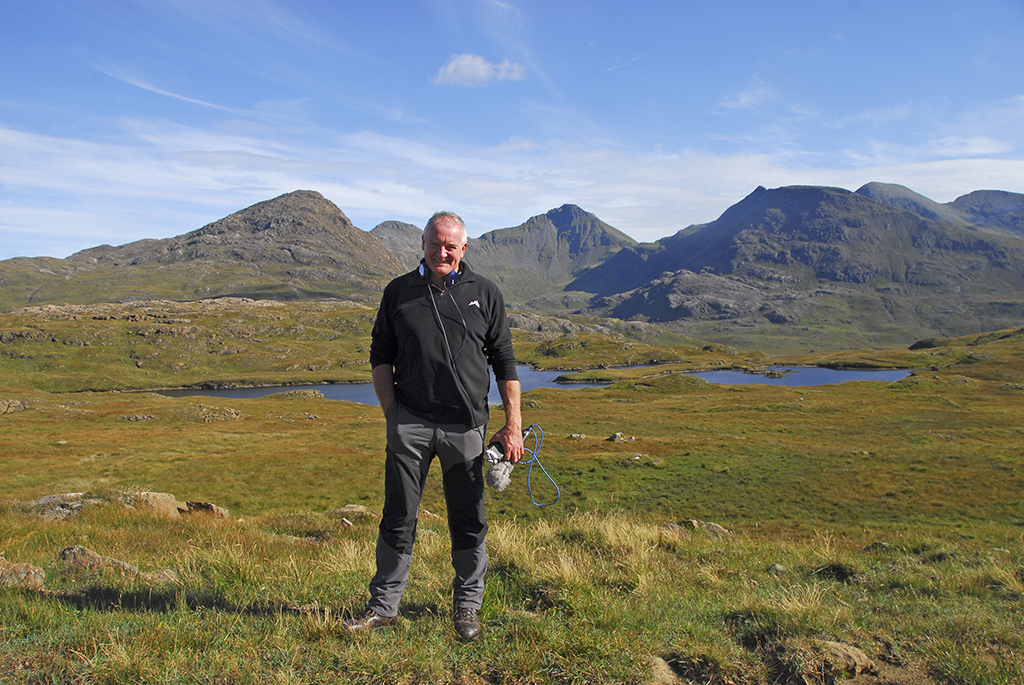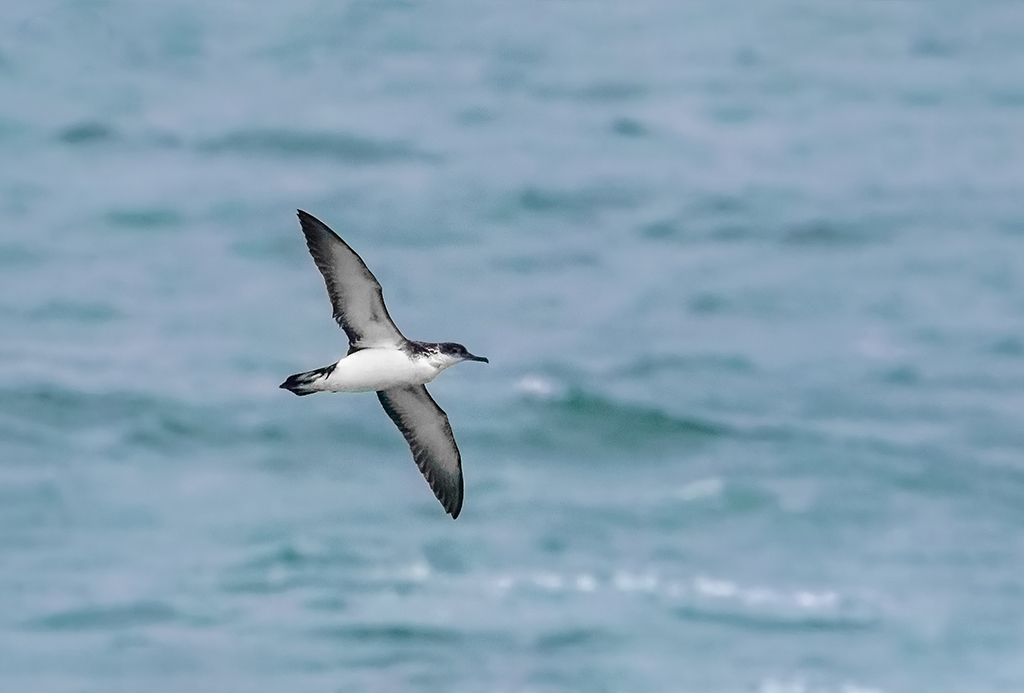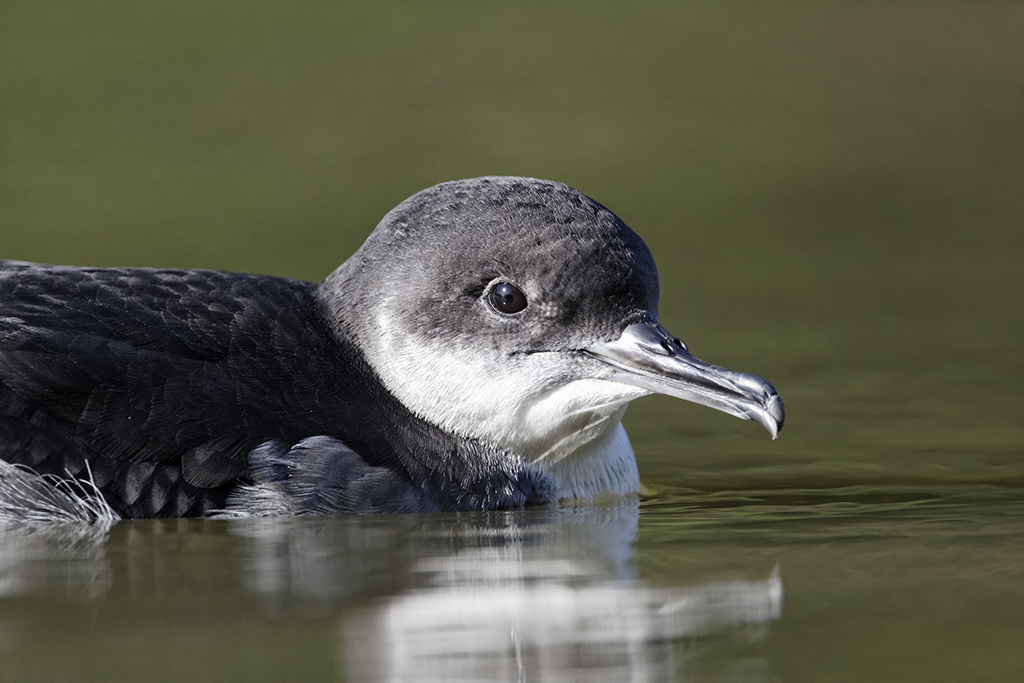
Rum is shear heaven for the Manx Shearwater
Creating a cacophony of noise terrifying enough to strike fear into the hearts of the Vikings, the Manx shearwater feels right at home on the wilderness island of Rum.
From Mallaig, the distinctive forms of the Small Isles and the crooked-toothed ridge of the Skye Cuillin beckoned seductively through veils of low cloud.
Rum’s Norse-sounding peaks – Askival, Hallival, and Trollaval – were free of rain shadow and the forecast was set fair. When the Vikings came to the island, they heard hair-raising shrieks emitting from close to the mountain summits, and were convinced the area was infested with trolls.
They named one peak Trollaval. The famous author-biologist-naturalist Ronald Lockley described the sounds as ‘a bedlam of wild screaming, a wind howling, or the crying of insane spirits’.
Most people see Manx shearwaters flitting effortlessly over the crest of the waves, or ‘rafting’ out at sea where they congregate in large number. True pelagic wanderers, they are skilled in flight but only come ashore to breed, being ungainly and vulnerable on land.
Their name originates from the Isle of Man where in 1014 Viking visitors were swarmed by a massive colony. Ironically it has now almost gone, largely due to predation by rats and domestic cats, plus human disturbance. Yet the name ‘Manx’ shearwater lives on.

Mark Stephen is always prepared for an interview.
When I had the opportunity to go to Rum with Mark Stephen, the popular co-presenter of BBC Radio Scotland’s Out of Doors programme, to visit the island’s Manx shearwater colony, I leapt at it.
Together for the past 15 years, Mark Stephen and Euan McIlwraith have been the mainstays of this popular programme.
I first met Mark when he came to talk about juvenile red squirrels I had hand-reared. When one ran up his leg, and leapt on his shoulder, his comments revealed a man with a passion for his job, as well as for wildlife. In demand as a broadcaster and programme maker, his diverse knowledge is astounding.
He reaches the heart of the matter, tackles an eclectic range of subjects, and is never judgemental. He firmly believes that his role is that of a listener rather than talker – given time everyone has a story to tell.
Our arrival on Rum in Indian summer sunshine belied the true nature of the beast. This is a place of ultimate wildness. With one of the highest rainfalls in the British Isles, its midges ‘have the bite of an eagle’ according to author Mairi Hedderwick.
Bees hummed therapeutically amid fuschia and crocosmia; oystercatchers and curlews guddled on Loch Scresort’s shore, whilst hoodies lazed rising high above rocks to smash the occasional shelled snack.
We wandered up the track to the comfortable new 20-bed bunkhouse owned by the Island of Rum Community Trust (IRCT) where we were to meet Scottish Natural Heritage (SNH) reserve manager Mike Ingram.
Mike took us by Land Rover across eight miles of track to Harris. Panoramas to Coll and Tiree, the silhouetted Dutchman’s Cap, and the massive presence of the Rum Cuillin took the breath away.
In 1957 the island was bought from the eccentric Bullough family by the Nature Conservancy and designated as a National Nature Reserve, since transferred to SNH. Here the long running red deer study has resulted in science and natural history which is regularly published in scientific journals. Findings have been used to influence deer management policy and practice all over Scotland for the good of both deer and the environment.

The Manx shearwater is perfectly at home when out at sea
At Harris on the dramatic western shore, the extraordinary Bullough family mausoleum stands firm, a breath of Grecian architecture in a Hebridean backdrop, amid Rum’s unique Highland ponies and Highland cattle. In the steep burn sides, two testosterone-filled wild billy goats picked at short-cropped turf.
The ponies have important ancient bloodlines. Many are of unusual colour, some with silver or flaxen manes and tails, throwbacks to Nordic ancestry. In 1775 Dr Johnson described them as ‘very small but of a breed eminent for beauty.’ They are also used throughout the stalking season.
Mike Ingram has been here for two years. Fascinated by the island’s many bizarre chapters, and particularly attracted by its incredible fauna and flora, he previously lived on Dartmoor.
His role as reserve manager includes liaising with the IRCT who have owned approximately 300 acres since 2010 in and around the village of Kinloch, including three crofts following a transfer from SNH to the community. Now after 50 years of government agency control, a shop, hall with café, bunkhouse and campsite, as well as the land, are open to opportunities making the island more attractive to new families.
For Mike, who recently discovered the rare belted beauty moth which had been absent from Rum for a decade, the shearwaters are another of Rum’s ‘wow’ factors. Vibrant green patches visible from afar paint the slopes of Hallival. These ‘shearwater greens’ are evidence of the birds’ lime-rich guano.
This pigeon-sized member of the tubenose family, in the same group as the albatross and fulmar, returns to its burrows in March. By May a single egg is laid, and takes 50 days to incubate. The chick is a slow developer, remaining underground for 70 days before embarking on its marathon maiden flight to South America. Rum’s 100,000 pair colony is of global importance, making up a quarter of the world population.
We set forth laden with gear and plastered in midge repellent as the last rays of sun slipped behind the hills. Small, wind-sculpted trees stood sentinel beside a racing burn. It was a long hot puff up the steep hill, atmospherically fuelled by the embers of the gloaming.

The Manx shearwater is more graceful on water than on land
We trekked on over rugged terrain, eventually reaching a two-berth hut filled with all the trappings of the vagrant scientist as well as provisions and camping equipment. Mike revealed more of the story of a bird that is long-lived and may clock up an astonishing five million air miles in its lifetime. We ascended to an area peppered with burrows. Perched high on Hallival’s flanks a massive silence engulfed us.
Eventually we heard the first weirdly eerie calls of a returning adult shearwater echoing across the vortex. Now late in the season, most adults had already gone, abandoning their young.
These fat-laden juveniles must first slim before they can be airborne. The calls continued, part cackle, part shriek, otherworldly. In the peak of the manxie season, the night sky fills with hundreds of catapulting, caterwauling birds crash-landing whilst communicating to their chicks. We descended in ebony darkness through bog and burn, heads full of the surreal encounter.
The next morning, Mike’s conversations turned to tracking a rat to monitor the effects they have on Rum’s shearwater colony, and he conducted interviews about crofts, bunkhouses, and how on earth to diversify in such an environment.
One interviewee, Nic Goddard, had done just that by making pendants of midges set in resin. ‘You’ve got to use what you can. They have been living off me for years now it’s my turn to get my own back. I reckon they act as a talisman to keep other midges away.’
Laughing, Mark asked for his money back because the one he’d bought definitely wasn’t working.
(This feature was originally published in 2015)
TAGS

